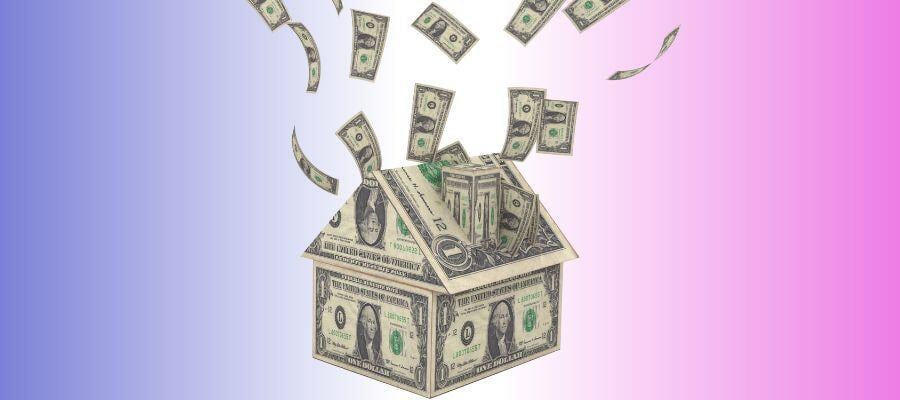
Master Cash Flow: Calculating Profits from Rental Properties

If you're a real estate investor and you've plunged into the rental properties market, you must have heard the term 'cash flow.' Still, do you truly understand what this means and more importantly, how to calculate if your rental properties are indeed cash-flowing? Stick around because we're going to decipher it right here.
Understanding Cash Flow
The way money moves in and out of your business is referred to as cash flow. In the context of real estate investing, it is essentially the profit made after all the property's expenses have been paid off. To thrive in the buy-and-hold real estate business, adequate knowledge of cash flow calculation is vital.
Cash flow isn't just about covering expenses; it’s also an indicator of the health and growth potential of your investment. Positive cash flow suggests your property is generating enough income not only to cover costs but also to create a financial cushion. This extra income can be reinvested to enhance property value, pay down debt faster, or even expand your investment portfolio.
Furthermore, understanding cash flow helps investors manage unexpected expenses, such as sudden repairs or tax adjustments, which can arise in real estate. By thoroughly grasping cash flow dynamics, you position yourself for greater financial stability and long-term growth.
How Rental Properties Generate Cash Flow
Rental properties generate cash flow mainly through rent collection. Over time, the value of your property may also appreciate, providing a handsome profit upon selling. However, the steady income from rents is the primary cash inflow for buy and hold real estate investors.
In addition to rental income, certain properties may offer other avenues for income generation. For example, investors can monetize parking spaces, storage areas, or even shared amenities within the property. For example, if there is a barn on the property you may choose to rent it to farmers rather than the tenant living at the property. Some investors also choose to add value through upgrades and renovations, allowing them to increase rental rates or attract higher-quality tenants who stay longer and reduce vacancy rates.
Another strategy for generating cash flow is short-term rentals, which can yield higher returns in tourist-friendly areas. These methods, combined with careful property selection and management, help create a consistent income stream, ultimately boosting the property’s profitability over time.
The Cash Flow Calculation
While understanding the concept of cash flow is quite easy, real estate investors sometimes grapple with calculating the cash flow from rental properties. However, don't be scared off, it's simpler than it sounds. The equation goes as follows: Cash Flow = Rental Income – Operating Expenses.
For instance, if you're earning $1,800 per month from a rental property and your expenses including property management, repairs, property mortgage, etc. total $900, your cash flow is $900 ($1,800 - $900). This implies that you're gaining $900 from your investment in the property every month.
Factors Influencing Cash Flow
Certain variables affect the cash flow of rental properties, including:
- Vacancy rates: It's vital to factor in the normal vacancy rate. The property might not always be occupied year-round.
- Property taxes: These can significantly impact your operating expenses. Make sure you understand property tax liens and how to avoid them so your property doesn't get sold at a tax auction.
- Maintenance costs and property management: Repairs, regular maintenance, as well as property manager fees, should be accounted for.
Positive Cash Flow Vs. Negative Cash Flow
When the income earned from a property surpasses the costs, the result is a positive cash flow. This is the ideal scenario for real estate investors as it means the investment is paying off. A negative cash flow, on the other hand, occurs when the expenses exceed the income. This signifies a loss and should be amended as quickly as possible.
Tips for Enhancing Cash Flow
Increasing rent, reducing vacancy rates, or cutting costs, are among the practical strategies for improving rental property cash flow.
One effective method is to carefully screen tenants to ensure timely rent payments and reduce turnover, which often incurs additional costs. Another strategy is to minimize maintenance costs through preventative care—regularly inspecting the property can help identify issues before they become expensive repairs.
Investors can also explore energy-efficient upgrades, such as installing LED lighting or energy-efficient appliances, which may lower utility costs if these are covered in the lease. Additionally, consider reevaluating insurance policies periodically to ensure you’re getting competitive rates.
For those with multiple properties, negotiating bulk service discounts on management or maintenance can also improve cash flow. These strategies, when combined, create a resilient approach to maximizing cash flow over the long term.
Conclusion
Understanding the calculation of cash flow is critical to the success of real estate investing. While it takes some effort to align your income and expenses for a positive cash flow, the return on investments makes it all worth it.

About Samantha Ankney
Samantha is the Social Media Manager at DealMachine, where she oversees all social media strategies and content creation. With 3 years of experience at the company, she originally joined as a Media Specialist, leveraging her skills to enhance DealMachine's digital presence. Passionate about connecting with the community and driving engagement, Samantha is dedicated to sharing valuable insights and updates across all platforms.


